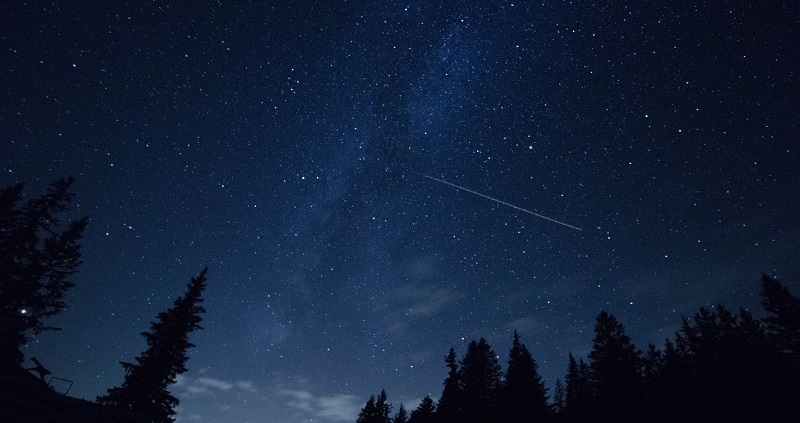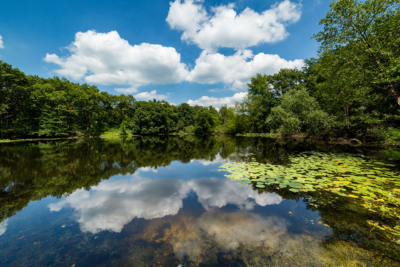Turn Off the Lights This Summer: Protect Wildlife by Reducing Light Pollution
A warm summer night is the perfect time for stargazing, but anyone who has looked up at the night sky in the vicinity of a city or town has most likely noticed a halo of hazy light that seems to mask the stars and brighten the sky. This effect, called skyglow, is due to light pollution – excessive artificial light emanating from populated areas that not only dims the appearance of stars but also has serious impacts on wildlife. This blog explores the detrimental effects of light pollution as well as solutions that corporate conservation programs can employ to mitigate light pollution.
What is light pollution?
While air and water pollution are due to foreign contaminants entering an ecosystem and causing harmful effects, light pollution is not caused by unnatural pollutants, but rather the presence of inefficient or excessive artificial light. Because of this distinction from other types of pollution, it is sometimes referred to as artificial light at night. More than 80% of the world’s population lives under light pollution, with 99% of U.S. and European populations affected. Singapore is the most light-polluted country in the world; residents’ eyes are unable to fully adjust to darkness, and none are able to see the Milky Way.
Light pollution takes several forms. The aforementioned skyglow results in an artificial glowing in the night sky. Glare is bright light pollution that causes discomfort and difficulty seeing, while clutter refers to a group of bright lights, such as streetlights or exterior building lights, that can create distractions for humans and animals alike. Light trespass describes artificial light that spills into an unwanted area, such as floodlights illuminating a neighbor’s yard. Each of these types of artificial light at night is a detriment to humans, wildlife and the environment.
How does light pollution impact wildlife?
Natural light helps orient the life cycles and behaviors of wildlife. When light pollution interferes, these behaviors are interrupted, vastly impacting not only the lives of individual species but also the ecosystem as a whole. For example, light at night disrupts the natural rhythms of nocturnal animals, affecting predators’ hunting opportunities and prey’s ability to find cover. Light pollution also affects the reproduction of wetland amphibians like frogs and toads, who croak at night to attract a mate. Excessive light interrupts the darkness and therefore their mating song.
Growing research indicates that light pollution also impacts the ability of migratory birds to navigate. An excessive amount of artificial light may influence migratory birds into beginning their migration too early, as they misinterpret artificial light at night for longer days. Studies indicate that birds’ magnetic compasses are wavelength-dependent, and that red and white lights, which contain long-wavelength radiation, tend to disorient birds.
While one might not expect light pollution to penetrate the surface of the water, it can even impact marine ecosystems. Light pollution from ships and offshore structures disrupts the behavior of corals and other marine creatures. In some cases, artificial light attracts barnacles, which attach to manmade structures and cause property damage.
Ultimately, the effects of light pollution on individual species lead to greater impacts within the entire ecosystem. Brightly lit areas may drive certain species away, leading to population fragmentation, and the disruption in species’ reproduction affects the food web, as any predators relying on this species for food will have fewer options. Because of these broad-scale changes, light pollution can also lead to the proliferation of invasive species — for example, cheatgrass, which has been observed to grow in urban areas where more streetlights are present.
How can corporate landowners reduce light pollution?
Corporate sites such as office buildings, construction facilities and factories often include excessive interior and exterior lighting that can impact wildlife. The following tips can support corporate landowners in reducing light pollution while also ensuring the safety of employees and the public:
- Only use light when needed. Set timers or install motion sensors that turn off interior and exterior lights when the building or exterior is not being used. This tip not only serves to reduce light pollution, but it also helps lower electricity usage.
- Install blinds on windows to reduce light trespass from building interiors.
- Use amber lighting or lighting below 3000 Kelvins to limit detrimental effects on wildlife.
- Keep lighting low to the ground as much as possible. For wall- or pole-mounted lights, use shields or hoods to direct light downward, thereby preventing glare and light trespass. Additionally, ensure that lighting is not mounted any higher than the building or nearby trees.
- Lower or completely turn off exterior signage, parking lot lights or architectural lighting after 11 pm.
Making these small but sustainable changes to the lighting at corporate sites can support wildlife and help keep the night sky dark.

